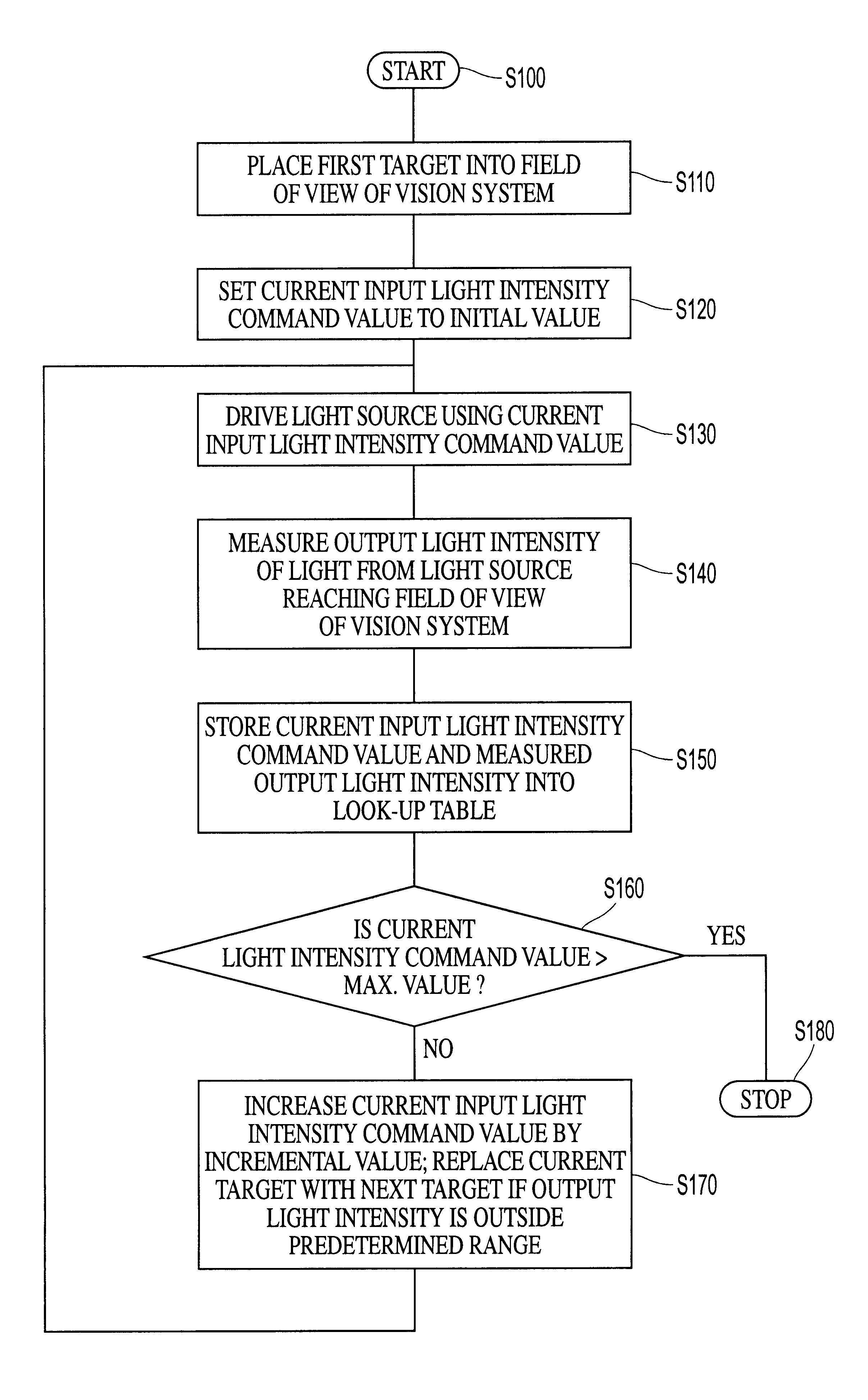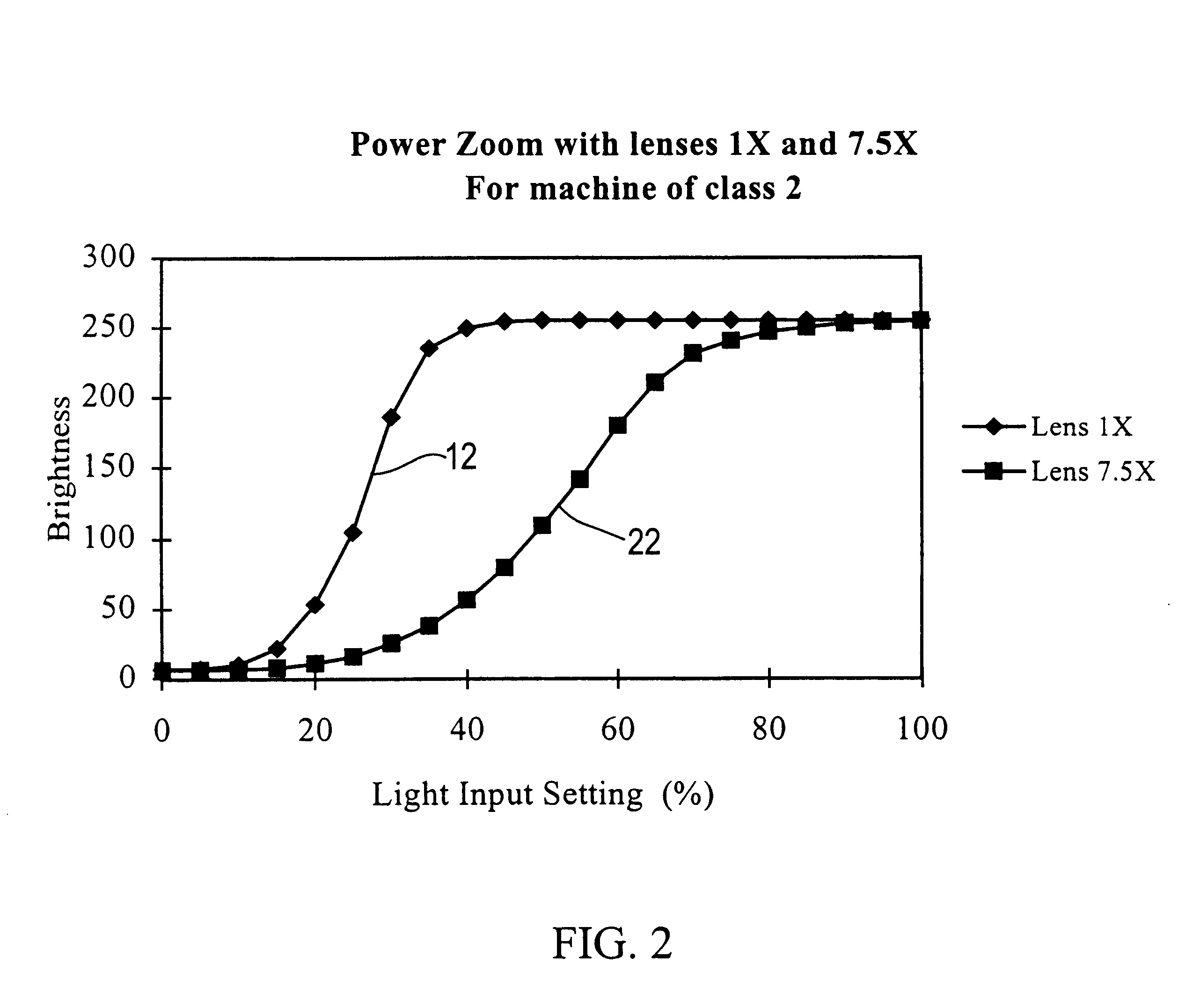Open-loop light intensity calibration systems and methods
a technology of open-loop light intensity and calibration system, which is applied in the direction of process and machine control, optical radiation measurement, instruments, etc., can solve the problems of not being able to predict the same lighting behavior on different classes of vision systems, and it is difficult to interchange parts of even similar particular vision systems of the same class of vision systems
- Summary
- Abstract
- Description
- Claims
- Application Information
AI Technical Summary
Benefits of technology
Problems solved by technology
Method used
Image
Examples
Embodiment Construction
For simplicity and clarification, the operating principles, and design factors of this invention are explained with reference to one exemplary embodiment of a vision system according to this invention as shown in FIG. 4. The basic explanation of the operation of the vision system shown in FIG. 4 is applicable for the understanding and design of any vision system that incorporates the lighting calibration systems and methods according to this invention.
As used herein, the input light intensity command value "V.sub.i " is the light intensity value set by the user to control the light output intensity of the source light. The input light intensity command value is set either expressly in a part program or using a user interface. The range of the input light intensity command value is between zero and one, which represents a percentage of the maximum output intensity possible. In the following description, the ranges 0-1 and 0%-100% are used interchangeably. It should be appreciated tha...
PUM
 Login to View More
Login to View More Abstract
Description
Claims
Application Information
 Login to View More
Login to View More - R&D
- Intellectual Property
- Life Sciences
- Materials
- Tech Scout
- Unparalleled Data Quality
- Higher Quality Content
- 60% Fewer Hallucinations
Browse by: Latest US Patents, China's latest patents, Technical Efficacy Thesaurus, Application Domain, Technology Topic, Popular Technical Reports.
© 2025 PatSnap. All rights reserved.Legal|Privacy policy|Modern Slavery Act Transparency Statement|Sitemap|About US| Contact US: help@patsnap.com



